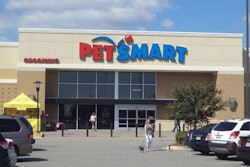
The clean label trend that’s been all the rage in pet food and human food for a few years doesn’t apply just to the product itself; the packaging should play a role, too, according to a new report from Mintel that names “clean label 2.0” as one of the top packaging trends for 2018. “Though consumers are more informed than ever, they may reject brands if they feel overloaded with information, which leads to questioning of provenance, authenticity and transparency,” the report says. “Brands must bring the next generation of clean label to packaging design to provide a moment of calm and clarity for shoppers in an increasingly hectic retail environment.”
That makes sense but also raises interesting considerations for consumable products, for which regulations require specific sets of information, and the type of information, to appear on packages. That’s true for pet food as well as human food.
For example, a short ingredients list that avoids chemical-sounding names is often considered a key feature of a clean label, but in the US, regulations require pet food manufacturers to list every single ingredient, and often by their chemical name (as with vitamins). In human food, a product with a shorter list may not be the healthiest option, as with a bread that does not include folic acid (an essential B vitamin).
Just right: optimum amount of information on pet food labels
Still, the Mintel report, called “Global Packaging Trends 2018,” offers suggestions that the Association of American Feed Control Officials (AAFCO) and Food and Drug Administration (FDA) may want to consider as they look to update and improve US pet food labels. Providing too little information on a package is not necessarily helpful, either, the report says: “Where mass brands often fear stepping outside a category’s design status quo, craft brands often pare back too far and become candidates for de-selection due to being too far outside consumer’s comfort zones of marketing expectation.”
Is there a happy medium? Apparently there is, what Mintel calls the “essentialist” design principle, “offering just enough of what is essential for consumers to make an enlightened and confident purchasing decision.” That means succinct, easily understandable messages and claims, though again, with consumables, regulations often dictate which claims can be made.
The trick is to focus on key product features and attributes; that can also extend to package functionality and qualities, such as convenience features or sustainability.
Clean label now also means sustainability
Regarding sustainability, two other top packaging trends for 2018 identified by Mintel are “packaged planet” – referring to packaging’s potential role in helping decrease food waste – and “sea change,” or reducing the use of plastic packaging to help cut the amount of plastic waste that ends up in the oceans. (The report cites an astonishing fact from the Ellen MacArthur Foundation: If current practices continue, there will be more plastic than fish in the sea by 2050.)
Both trends can also fall under the clean label umbrella, which Innova Market Insights says has expanded to include ethical claims like ethical or sustainable packaging. (Interestingly, an Innova executive referred to the trend as “clean label 10.0,” way ahead of Mintel’s 2.0!) Such claims are rising globally as consumers’ concept of clean label has evolved to become more holistic and encompass peace of mind in terms of sustainability, environmental responsibility and ethics in addition to a healthy body.
Packaging for online pet food sales
Finally, one of the other packaging trends named in Mintel’s report has implications for pet food: “rEpackage,” a rather precious and pretentious way of saying that how a product shows up on e-commerce sites is important, especially as online continues to grow as a key retail channel. For example, pet food sales on Amazon increased 47 percent from 2016 to 2017, according to One Click Retail.
“As more and more consumers embrace online shopping, packaging will play a pivotal role in brands’ and consumers’ e-commerce experiences,” Mintel says. “Now is the time for brands to consider how packaging can alleviate, if not eliminate, consumer frustration with over-packaged and even under-branded goods sold online and delivered via e-commerce.”
Besides ensuring the product arrives safely and intact to the consumer, the packaging also must work hard to convey the product’s key attributes and features on a digital, and often small, display.

















